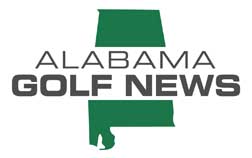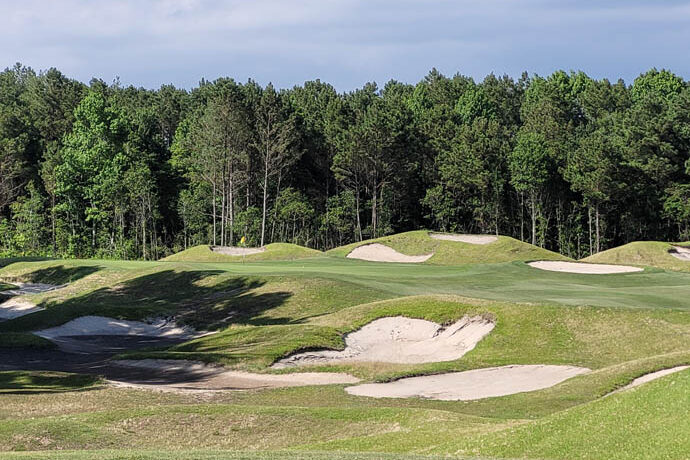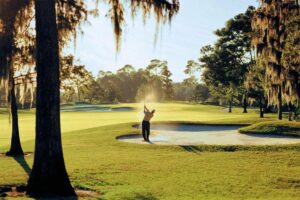With 90 courses, a destination for any budget
MYRTLE BEACH, S.C. – The explosion of golf destinations over the past decade has provided golfers a seemingly endless number of bucket-list options when it comes time to plan that next trip.
In the never-ending search to find the right trip, it’s prudent to not overlook Myrtle Beach – which can make a pretty good case as the original American golf destination. With 90 courses along the Grand Strand, Myrtle Beach is not known as the Golf Capital of the World for nothing.
Consider that in 2022, golfers logged approximately 3 million rounds across those 90 courses. Myrtle Beach is also home to the long-running World Amateur Handicap Golf Championship that drew 3,200 players this year.
The list of course designers reads like a Who’s Who of the best in the business. Arnold Palmer, Jack Nicklaus, Rees Jones, Tom Fazio, Pete Dye, Greg Norman, Gary Player, Mike Stranz, George Cobb, Clyde Johnston, Tom Doak, Dan Maples, Arthur Hills and Tim Cate all have one or more courses along the Grand Strand.
Best of all, because there is a variety of price ranges at those courses, Myrtle Beach is a trip that can fit anyone’s budget.
Top picks for Myrtle Beach golf
Golf can be played 365 days a year, but the best times for a visit to the Grand Strand are late spring and the fall when the temperatures are moderate. During the summer months, Myrtle Beach is a lot like Alabama – hot and humid – although you can get breezes coming off the Atlantic Ocean to make it a little bit more tolerable.
Here’s a short list of courses to consider for a trip to Myrtle Beach. Many of them are among the best on the Strand.
Tidewater Golf Club
The first and only design from tax attorney Ken Tomlinson, Tidewater opened in 1990 to much fanfare, including a designation as the country’s best new public golf course from Golf Digest and Golf magazine.

Built on a 600-acre property, Tidewater weaves its way in and out of tree-lined fairways and along the Intracoastal Waterway and Cherry Grove Inlet , offering some magnificent views. Water is in play on 15 holes and Tidewater features a variety of long and short par 4s. The longer holes provide corridors to play run-up shots, while the short holes require precision approach shots.
Tidewater begins to show its teeth on the third hole, a 152-yard par 3 that might be the best hole on the course. Dubbed “Stranded,” it’s the first time a player gets a panoramic view across the vast marshland. Well bunkered with a severely sloped and undulating green, “Stranded” is one of Tidewater’s memorable holes.
If the third hole is memorable, the fourth hole – “Futch Site” – is an unforgettable 400-yard par 4 that plays alongside the marsh to a green that slopes from back-to front and is guarded by a trio of bunkers in the front.
Caledonia Golf & Fish Club
Caledonia is simply magnificent. The Mike Strantz design has frequented many “Top 100” lists since opening in 1994, and it’s easy to understand why. The course is extremely fun to play — not to mention aesthetically pleasing — and it provides a difficult but fair test from the Pintail (6,526 yards), Mallard (6,121 yards) and Wood Duck (5,710) tees. Known for his quirkiness and imagination, Caledonia isn’t as wild a ride as, say, North Carolina’s Tobacco Road but it’s not your run-of-the-mill template layout, either.
The 18th hole is a great finishing hole – one of the best in Myrtle Beach. But perhaps its most memorable feature is the short entrance drive. Both sides of the road are lined with 200-year-old live oak trees covered in Spanish moss that eventually leads to the steps of the clubhouse. Paired with its sister course next door – True Blue – Caledonia is a must-play stop for any visit to the Grand Strand.
Dye Course at Barefoot Resort
One of four designs located at the luxurious Barefoot Resort — joining the Greg Norman, Davis Love III and Tom Fazio courses — the Dye Course is equal parts stunning and punishing.
From the tips, the Dye layout stretches to a lengthy 7,343 yards; though it’s certainly no bargain from the black (6,634 yards) or white (6,005 yards) tees, either. The course is inundated with waste bunkers eager to gobble up errant drives and/or approach shots into its Champion UltraDwarf Bermuda greens. This is a solid golf course on a beautiful property.
TPC Myrtle Beach
This is a difficult golf course, to put it mildly. From the back tees, this layout — once host to a Senior PGA Championship — measures 6,950 yards and offers four par 5s exceeding 500 yards. Even when it plays shorter at 6,600 yards (blue tees) and 6,193 yards (white tees), TPC Myrtle Beach can provide one heck of a test. The Tom Fazio design requires several shots to uphill greens, and trouble awaits in the form of well-placed bunkers and/or water hazards on several holes. The property is home to the Dustin Johnson Golf School. It might not be a bad idea to schedule a lesson after getting beaten up by TPC Myrtle Beach.
International World Tour Golf Links

Ever wanted to play Amen Corner? What about the 17th hole at TPC Sawgrass? Had thoughts about two-putting from the Valley of Sin after crossing the Swilken Bridge?
You can do all that for a fraction of the cost at the World Tour Golf Links. Each of the 18 holes is a loose replica of famous holes across the world. It’s always fun to hit some of the same shots we’ve become accustomed to seeing in golf tournaments over the years. It doesn’t play overly long — the first three tees range between 6,525 and 5,826 yards — and it’s certainly worth teeing it up there at least once if you enjoy the historical aspect of the sport.
Pine Lakes Country Club
If it is history you are chasing, Pine Lakes should be on the must-play list. First off, the course dates to 1927, making it the oldest course in Myrtle Beach. Thus, it is affectionately known as “The Granddaddy.”
Don’t be confused by its 6,675 yards from the No. 4 tees – Pine Lakes is a par 70 track that also features seven par 4s of 400 or more yards. Even from the more modest No 3 tees (6,305 yards), there are four 400-yard par 4s, including back-to-back monsters at Nos. 13-14.
Pristine conditioning and an old-school design that encompasses the natural terrain are other highlights of Pine Lakes, which is also known as the birth place of Sports Illustrated. Pine Lakes is also home to the Myrtle Beach Golf Hall of Fame. An added bonus at Pine Lakes is that the clubhouse is on the national registry of historic places.
King’s North at Myrtle Beach National

One of three courses at Myrtle Beach National, King’s North is an Arnold Palmer design that will challenge every part of your game. It was named South Carolina’s course of the year in 1997, and in 1999 was tapped as one of the Top 100 Women Friendly courses by Golf For Women magazine. That holds true today, with three sets of tees designed specifically with women in mind.

King’s North features a pair of Myrtle Beach’s iconic holes – No. 6 is known as “The Gambler,” a risk-reward par 5 that has a split fairway. Checking in at 497 yards, play a riskier drive to the left fairway which is actually a small island and the green is accessible in two. Take the conservative route to the right and it takes a friendly three shots to make it to the green.
The 18th hole is known as “The Bulls-eye,” a quaint par 4 covering 367 yards with more than 40 bunkers lining the fairway and guarding a green that juts into a lake.
Of course, those are just a few of Myrtle Beach’s top courses. There’s plenty more to explore. For more information or to book a trip, go to MyrtleBeachGolfTrips.com.
Note: Cullman (Ala.) Times Sports Editor Jake Winfrey contributed to this story.
Have a story idea or a news item to report to Alabama Golf News? Email gregg@alabamagolfnews.com
Featured image of the Dye Course at Myrtle Beach by Gregg Dewalt







